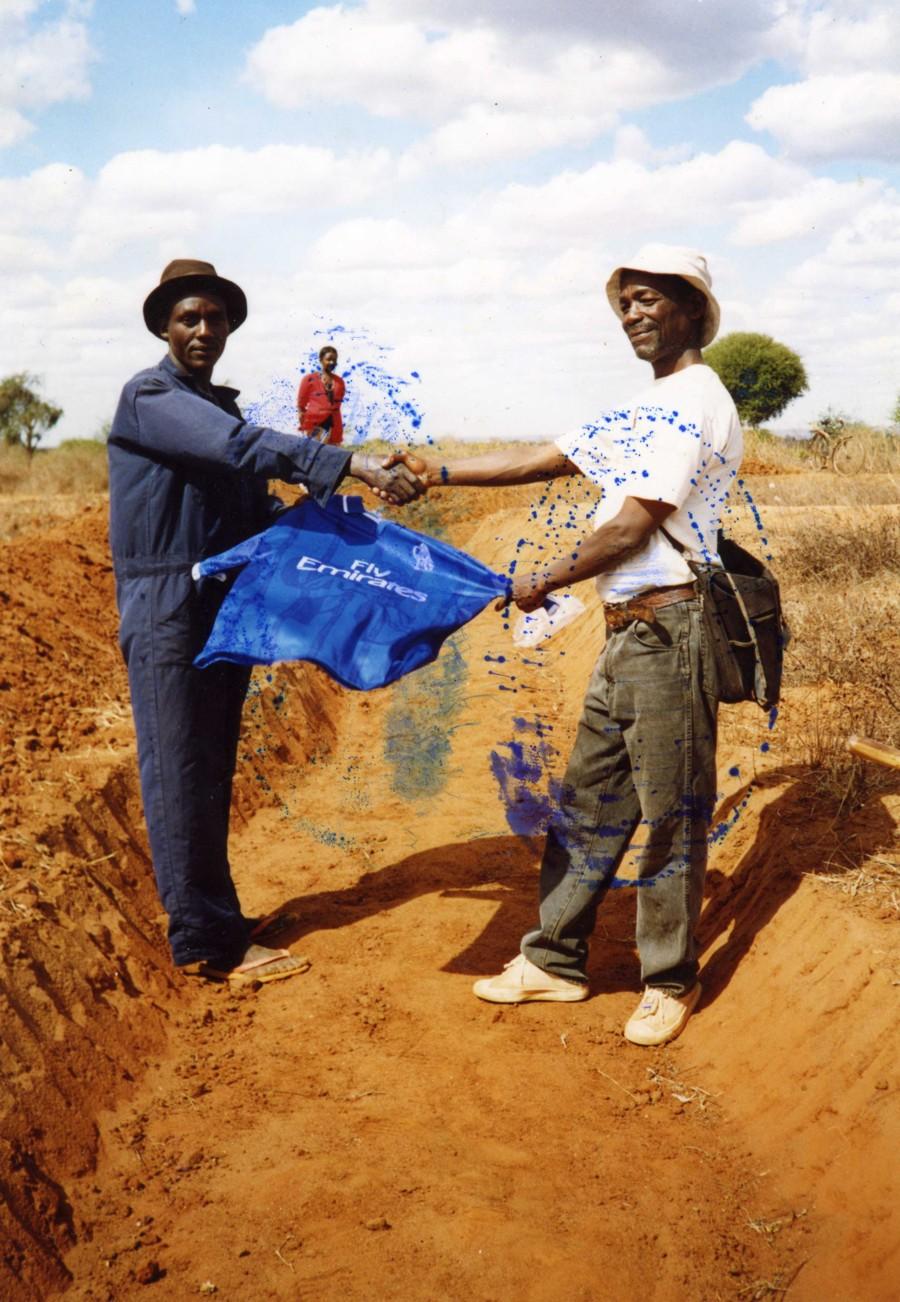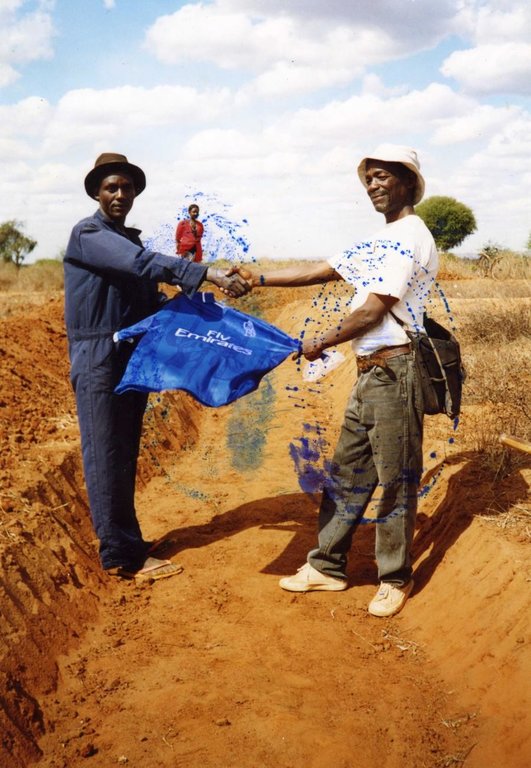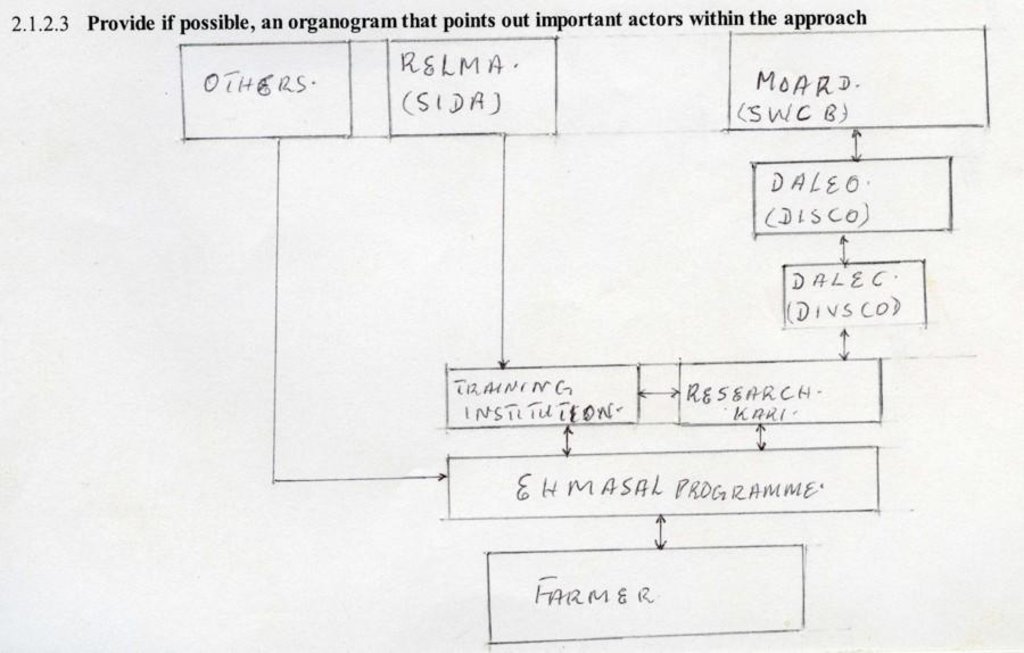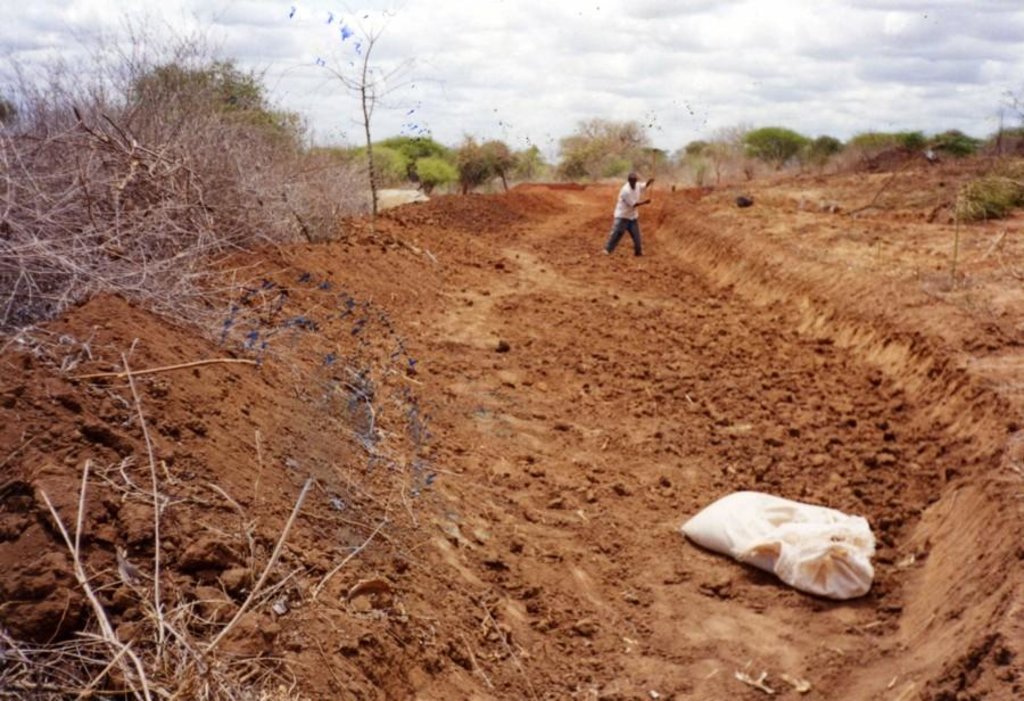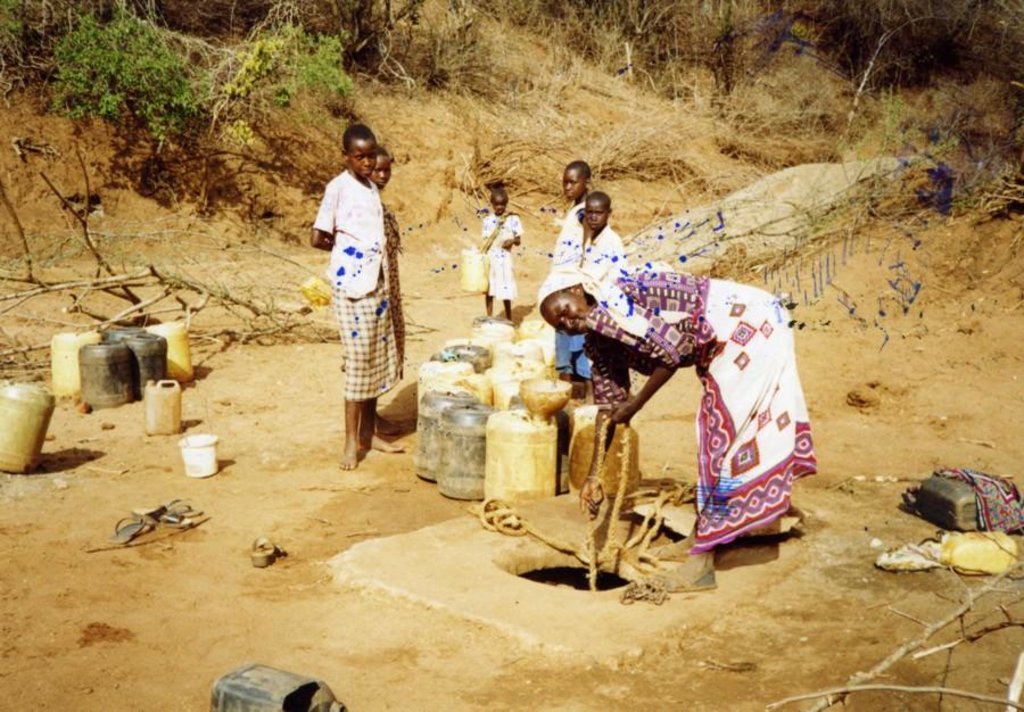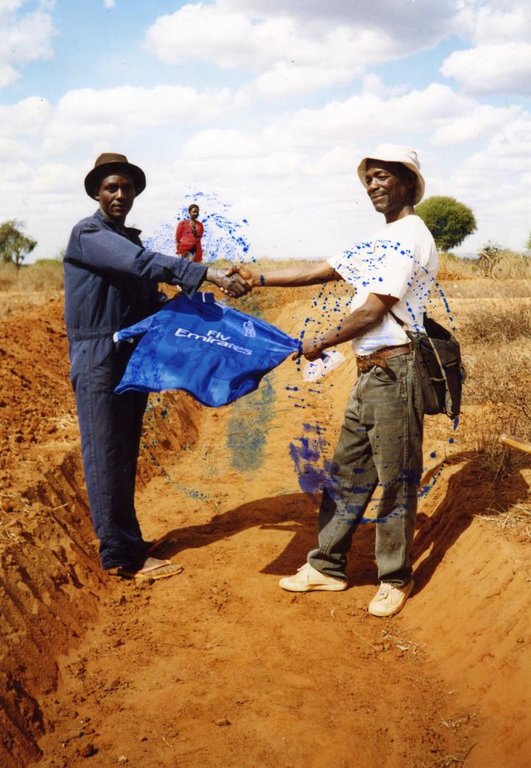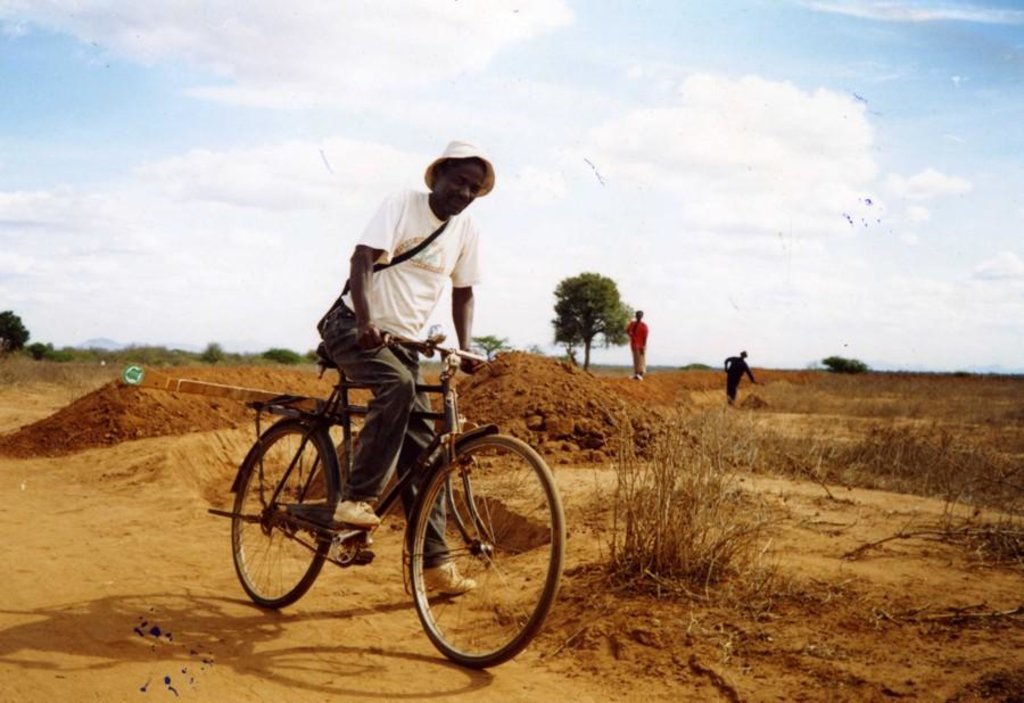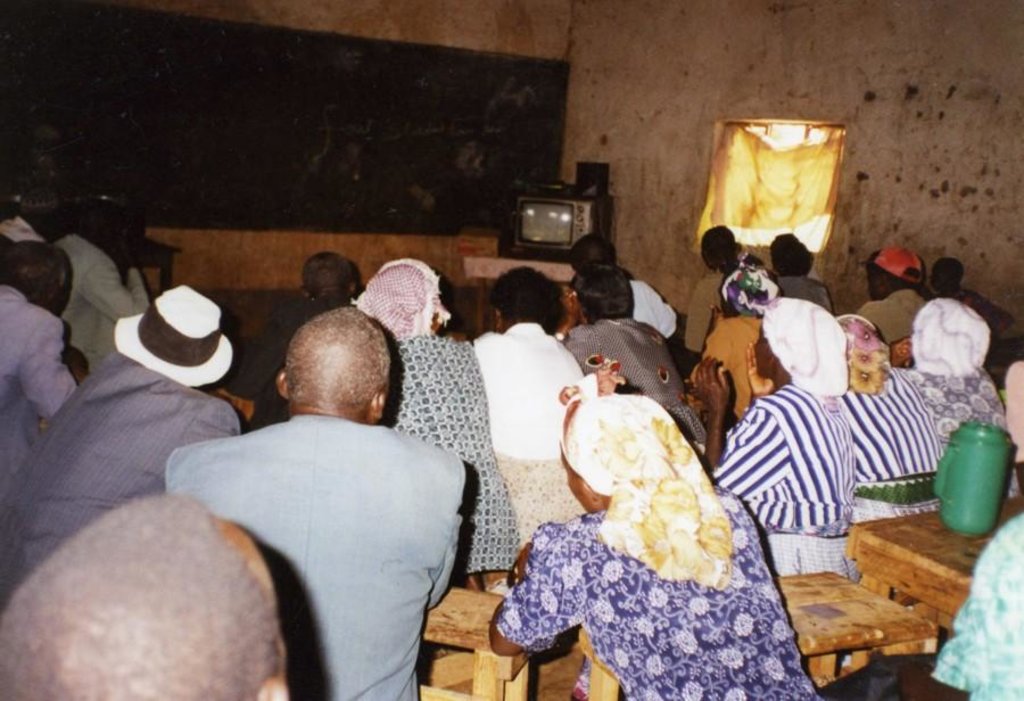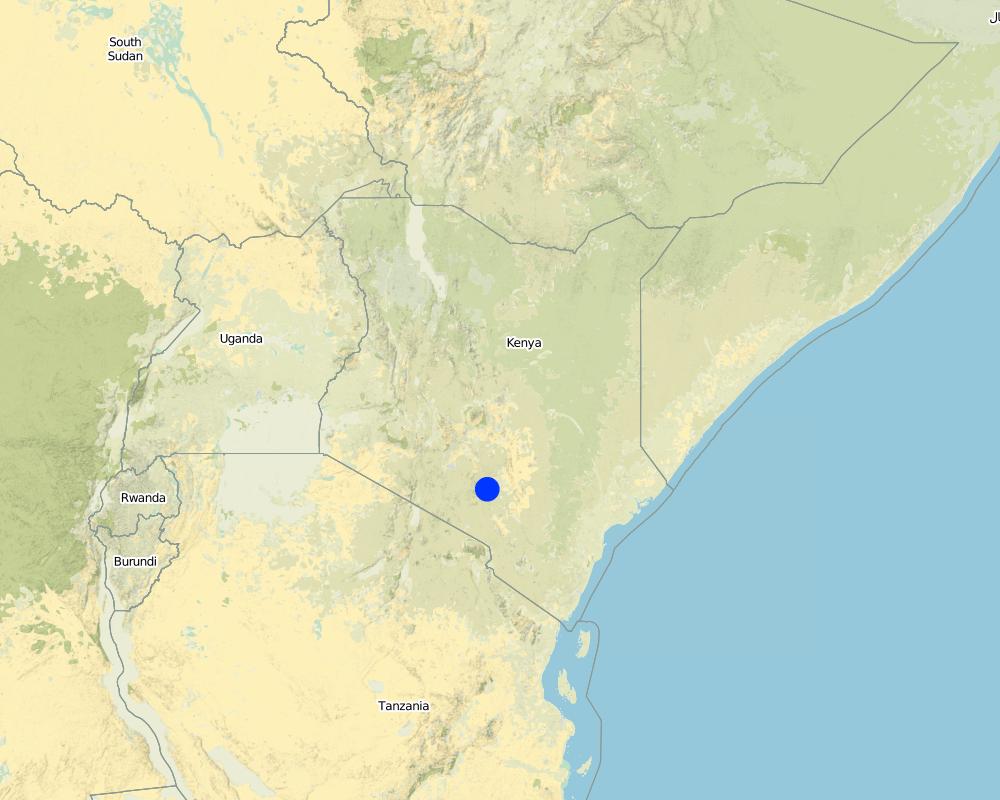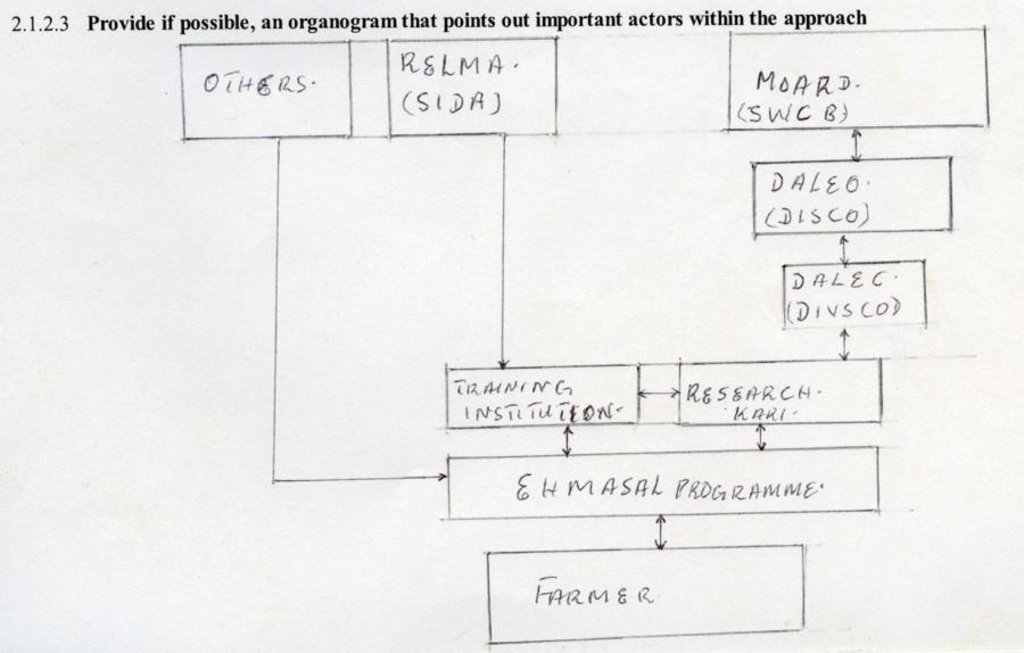water harvesting [Kenya]
- Création :
- Mise à jour :
- Compilateur : Philippe Zahner
- Rédacteur : –
- Examinateur : Fabian Ottiger
approaches_2356 - Kenya
Voir les sections
Développer tout Réduire tout1. Informations générales
1.2 Coordonnées des personnes-ressources et des institutions impliquées dans l'évaluation et la documentation de l'Approche
Spécialiste GDT:
Spécialiste GDT:
Mutunga Kathinji
Ministry of agriculture and rural development national SWC branch.
P.O.Box 30028 Nairobi
Kenya
Spécialiste GDT:
Adual Alex R.
RELMA/SIDA ICRAF house
P.O.Box 63403 Nairobi
Kenya
Nom du ou des institutions qui ont facilité la documentation/ l'évaluation de l'Approche (si pertinent)
Swiss Agency for Development and Cooperation (DEZA / COSUDE / DDC / SDC) - SuisseNom du ou des institutions qui ont facilité la documentation/ l'évaluation de l'Approche (si pertinent)
Ministry of Agriculture and Livestock Development of Kenya (MoA) - KenyaNom du ou des institutions qui ont facilité la documentation/ l'évaluation de l'Approche (si pertinent)
International Centre for Research in Agroforestry (ICRAF) - Kenya1.3 Conditions relatives à l'utilisation par WOCAT des données documentées
Le compilateur et la(les) personne(s) ressource(s) acceptent les conditions relatives à l'utilisation par WOCAT des données documentées:
Oui
1.4 Références au(x) questionnaire(s) sur les Technologies de GDT
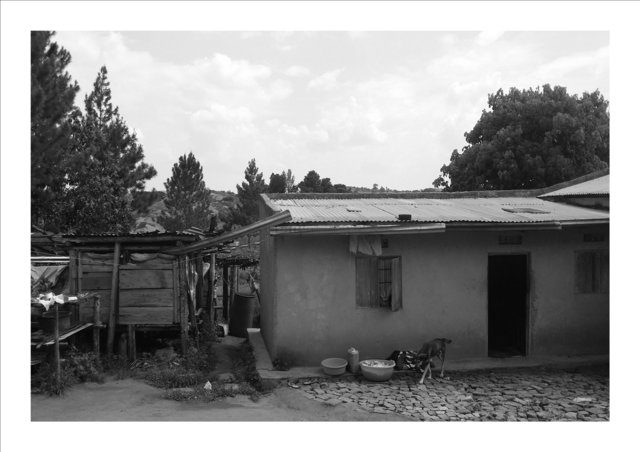
Wooden water reservoir for rain water harvesting. [Ouganda]
A gutter system constructed on the farmer’s house-roof collects rainwater and directs it into a constructed reservoir raised off the ground with interior walls lined with water-proof tarpaulin. The reservoir has a maximum capacity of 8,000 liters of water; clean enough for irrigation, livestock and domestic use during seasons of …
- Compilateur : Aine Amon
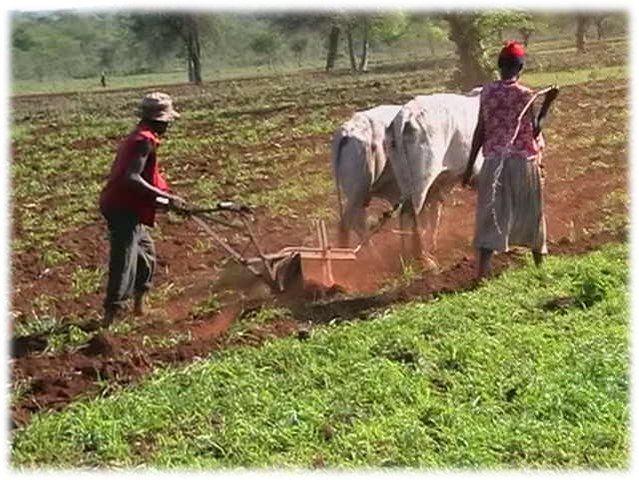
Micro-catchments for rainwater harvesting [Kenya]
Ox-ploughed furrow micro-catchments are intentionally built as part of seedbed preparation to harvest rainwater. Commonly used in dryland environments, the micro-catchment prolong water availability for seed germination and growth and development of the emerging seedlings.
- Compilateur : Kevin Mganga
2. Description de l'Approche de GDT
2.1 Courte description de l'Approche
Water harvesting for agricultural production in ASALS.
2.2 Description détaillée de l'Approche
Description détaillée de l'Approche:
Aims / objectives: Water harvesting to enhance extra moisture and for reduced risks of crop failure. The technology combines retention/infiltration ditches, bench terraces, appropriate tillaging, manure use, water channels diverting run off from either high ways or natural waterways and stabilization of SWC embankment. Implementation is made by land users with guidance of SWC specialists. Land users may be a group or individual, though the land use type is individual ownership.
Other important information: Most of part 2: specification of SWC approach, QA2.11.3-QA2.5.2.3 were answered with assumptions since there never existed other projects in the area before this indigeneous one known as extra humid in arid and semi-arid lands (EHMASAL) programme established in 2000 to provide land users with the existing SWC technologies and methods of approaches to meet the prevailing need of self-sufficience and food security. The programme strategies are attached.
2.3 Photos de l'approche
2.5 Pays/ région/ lieux où l'Approche a été appliquée
Pays:
Kenya
Région/ Etat/ Province:
Eastern province
Map
×2.6 Dates de début et de fin de l'Approche
Indiquez l'année de démarrage:
2000
2.7 Type d'Approche
- fondé sur un projet/ programme
2.8 Principaux objectifs de l'Approche
The Approach focused mainly on SLM with other activities (Timeliness in planting/transplanting, seed selection, seedlings variety and breeds for the AEZ.)
To harvest runoff and spread it on cropped area to maximize agricultural productivity. To improve crop moisture requiremnet. To reduce risks of crop failure stimulated by aridity in ASALs. To control soil erosion by water and wind. To improve the inflitration rate. To enhance food security for self-sufficiency and reliance.
The SLM Approach addressed the following problems: Inadequency of soil moisture resulting to crop failure. Inefficiency of approach to improve the situation. Fertility depletion due to continuous cultivation. Soil crusting caused by erosion, poor tillaging, overgrazing and deforestation (degadation).
2.9 Conditions favorisant ou entravant la mise en œuvre de la(des) Technologie(s) appliquée(s) sous l'Approche
disponibilité/ accès aux ressources et services financiers
- entrave
The much need be done on SWC in ASAL is beyond the sole land user for hand
Treatment through the SLM Approach: It requires financial support by source of loans and market orientation
cadre juridique (régime foncier, droits d'utilisation des terres et de l'eau)
- favorise
The existing land ownership, land use rights / water rights greatly helped the approach implementation: Land ownership/land use rights help implementation of the approach since benefits are realized by the sole land user.
- entrave
No empowerment on land use law or bylaws
Treatment through the SLM Approach: Enforcement by legislation on land use policy.
connaissances sur la GDT, accès aux supports techniques
- entrave
poor land treatment-plans, poor land husbandry, low knowledge
Treatment through the SLM Approach: Interaction in land use change, especially with SWC specialists
3. Participation et rôles des parties prenantes impliquées dans l'Approche
3.1 Parties prenantes impliquées dans l'Approche et rôles
- exploitants locaux des terres / communautés locales
Land user/local SWC specialists. Working land users were work equally divided between men and women (The family leader organizes for activity implementation either family labour or casuals). Women are majority for reason that men are engaged on off-farm. Employmentproportion is about 3 women to 1 man. Mostly women in public meetings and open field days
- Spécialistes de la GDT/ conseillers agricoles
- gouvernement national (planificateurs, décideurs)
Water harvest for agricultural production RESCU 1996. Run off farming ministry of agriculture, Nairobi
3.2 Participation des exploitants locaux des terres/ communautés locales aux différentes phases de l'Approche
| Participation des exploitants locaux des terres/ communautés locales | Spécifiez qui était impliqué et décrivez les activités | |
|---|---|---|
| initiation/ motivation | interactive | Mainly:public meetings; partly: workshops/seminars; public meetings for initial awareness. Workshops/seminars for technical assistance for approach |
| planification | interactive | Mainly: workshops/seminars; partly: public meetings; innovators land users seminar |
| mise en œuvre | auto-mobilisation | |
| suivi/ évaluation | aucun | Mainly: reporting; partly: measurements/observations; correct dimensions, monthly progress report |
| Research | aucun |
3.3 Diagramme/ organigramme (si disponible)
3.4 Prises de décision pour la sélection de la Technologie/ des Technologies
Indiquez qui a décidé de la sélection de la Technologie/ des Technologies à mettre en œuvre:
- principalement les spécialistes de la GDT, après consultation des exploitants des terres
Expliquez:
consultative for land use change
Decisions on the method of implementing the SLM Technology were made by mainly by land users supported by SLM specialists. land users implemented voluntarily.
4. Soutien technique, renforcement des capacités et gestion des connaissances
4.1 Renforcement des capacités/ formation
Une formation a-t-elle été dispensée aux exploitants des terres/ autres parties prenantes?
Oui
Spécifiez qui a été formé:
- exploitants des terres
- extensionists/trainers
Formats de la formation:
- sur le tas
- zones de démonstration
- réunions publiques
Thèmes abordés:
Only field days and practical substitutes training for a fact that the programme has no source of finance to support trainings.
4.2 Service de conseils
Les exploitants des terres ont-ils accès à un service de conseils?
Oui
Décrivez/ commentez:
Runoff farming (water harvesting); Key elements: Infiltration/retention ditches, level bench terraces, soil structure, texture and fertility improvement, macro/micro catchment water harvest bund; 1) Advisory service was carried out through: non-governmental agency 2) Target groups for extension: land users; Activities: SWC activities, water harvest
Advisory service is inadequate to ensure the continuation of land conservation activities; Staff farmer ratio is too high to induce land use change
4.3 Renforcement des institutions (développement organisationnel)
Des institutions ont elles été mises en place ou renforcées par le biais de l'Approche?
- oui, un peu
Spécifiez à quel(s) niveau(x), ces institutions ont été renforcées ou mises en place:
- local
Précisez le type de soutien:
- renforcement des capacités/ formation
4.4 Suivi et évaluation
Le suivi et l'évaluation font ils partie de l'Approche? :
Oui
Commentaires:
Area treated aspects were regular monitored through measurements
no. of land users involved aspects were ad hoc monitored through observations
There were no changes in the Approach as a result of monitoring and evaluation: The changes may come up season after season due to rainfall characteristics in arid areas. The period is rather short to make a conclusion. No change observed hither to.
4.5 Recherche
La recherche a-t-elle fait partie intégrante de l’Approche?
Oui
Spécifiez les thèmes:
- écologie
- technologie
Donnez plus de détails et indiquez qui a mené ces recherches:
The existing SWC recommendations were released through the institution
Research was carried out both on station and on-farm
5. Financement et soutien matériel externe
5.1 Budget annuel de la composante GDT de l'Approche
Si le budget annuel précis n'est pas connu, indiquez une fourchette:
- 10 000-100 000
Commentez (par ex. principales sources de financement/ principaux bailleurs de fonds):
Approach costs were met by the following donors: local community / land user(s) (no external support)
5.3 Subventions pour des intrants spécifiques (incluant la main d'œuvre)
Si la main d'œuvre fournie par les exploitants des terres était un intrant substantiel, elle était:
- volontaire
5.4 Crédits
Des crédits ont-ils été alloués à travers l'Approche pour les activités de GDT?
Non
6. Analyses d'impact et conclusions
6.1 Impacts de l'Approche
Est-ce que l'Approche a aidé les exploitants des terres à mettre en œuvre et entretenir les Technologies de GDT?
- Non
- Oui, un peu
- Oui, modérément
- Oui, beaucoup
soil management structurally aiming to make use of previously lost runoff for crop production.
Est-ce que l'Approche a amélioré les questions foncières et des droits d'utilisation qui entravent la mise en œuvre des Technologies?
- Non
- Oui, un peu
- Oui, modérément
- Oui, beaucoup
Did other land users / projects adopt the Approach?
- Non
- Oui, un peu
- Oui, modérément
- Oui, beaucoup
about 20-25% of the other organized groups adopted the approach initially.
6.3 Durabilité des activités de l'Approche
Les exploitants des terres peuvent-ils poursuivre ce qui a été mis en œuvre par le biais de l'Approche (sans soutien extérieur)?
- oui
Si oui, décrivez de quelle manière:
About 75% of the land users may continue implementing the SWC activities without financial support in future. What would be required by land user as focused is layout, alignment, generally technology guidance. If other approaches e.g. trainings/seminars were included to all farm production systems.
6.4 Points forts/ avantages de l'Approche
| Points forts/ avantages/ possibilités du point de vue de l'exploitant des terres |
|---|
| increase weight on food security (How to sustain/ enhance this strength: to acquire knowledge of the land husbandry.) |
| introduces off-farm employment (How to sustain/ enhance this strength: proper measures and practices of water harvesting component.) |
| Points forts/ avantages/ possibilités du point de vue du compilateur ou d'une autre personne ressource clé |
|---|
| The approach focuses on food security and self-sufficiency. (How to sustain/ enhance this strength: Regular maintenance of the SWC structures and agroforestry establishment.) |
| Improve the standard of living if adopted by the community. (How to sustain/ enhance this strength: Enforcement of SWC policy by the government to protect technology areas.) |
| Reduces risk of crop failure due to poor rainfall distribution. (How to sustain/ enhance this strength: Introduce policy of land use right/land ownership.) |
| Reduces soil and water losses through erosion. (How to sustain/ enhance this strength: Introduced land use change and land management (land husbandry practices)) |
| Improves national economy as well as family gross income. (How to sustain/ enhance this strength: improvement on market of agricultural products and by-products.) |
6.5 Faiblesses/ inconvénients de l'Approche et moyens de les surmonter
| Faiblesses/ inconvénients/ risques du point de vue de l’exploitant des terres | Comment peuvent-ils être surmontés? |
|---|---|
| poor marketing system for most of agricultural products and byproducts. | formation of cooperative societies |
| slow in adoption on land use change due to longer period of cost return | government introduces enforcement law to discourage communal land use. |
| Faiblesses/ inconvénients/ risques du point de vue du compilateur ou d'une autre personne ressource clé | Comment peuvent-ils être surmontés? |
|---|---|
| regular crop failure due to erratic rainfall patterns | enhance extra moisture by water harvest and spreading it in cropped area |
| consumes time, energy and money to establish. | No soil, no food. No water, no life. Policy of approach |
| interferes with soil fertility and reduces land size by SWC structures. | Manure and fertilizer application regularly to maximize production level. |
| Slow in cost benefit return from a given area. | marketing orientation for farm products |
| Low income sources of the common land users. | Introduced sources of agricultural loan policy for ASALs. |
7. Références et liens
7.2 Références des publications disponibles
Titre, auteur, année, ISBN:
SWC manual for Kenya 1997 by D.B. ThomasSoil conservation in Kenya 1981 by C.G.WennerSWC technology development in Kenya by K:MutungaSony super DXE-180 videoThe sun will still rise videoRunoff, a friend or a foe video
Disponible à partir d'où? Coût?
agricultiral information centre, freeagricultiral information centre, freeM.A.R.D. SWCB-NBI Kenya, freeSWCB NBI Kenya, freeRELMA/CIDA, freeRELMA/CIDA, free
Titre, auteur, année, ISBN:
Rainfall runoff analysis by Paul Kimeu. 1-11. Feb. 1998
Titre, auteur, année, ISBN:
Water conservation, water harvesting and management (WCHM) scheme design. Practicals (WHIF) exercise. Embu February 1-11 1998
Titre, auteur, année, ISBN:
Method of collecting and storing local surface runoff for water supply in central Asian deserts by Prof A.G. Babaer
Disponible à partir d'où? Coût?
Desert research institute, Gogolstr.15.
Titre, auteur, année, ISBN:
Study of traditional water harvesting practices in Cost province, by J.O.Owupo, July 1998
Titre, auteur, année, ISBN:
Soil characteristics and properties for water conservation, harvesting and management (WCHM). (WH5) June 29-July 7 1997 by Kithinji Mutunga
Titre, auteur, année, ISBN:
Dryland water harvesting (WH), water conservtion (WC) techniques , by K. Mutunga 9-15 July 1995
Titre, auteur, année, ISBN:
Design procedure for harvesting and conservation system, by Odoyo J. Bittar. ministry of agriculture, Busia-Kenya, February 1-11, 1998
Titre, auteur, année, ISBN:
MINOR ROADS PROGRAMME soil conservation. Pilot project final report 1992agrisystems (EA) Ltd, P.O.Box 39636 Nairobi, free
Disponible à partir d'où? Coût?
Agrisystems (EA) Ltd, P.O.Box 39636 Nairobi, free
Titre, auteur, année, ISBN:
promoting farmer innovatiion . Workshop report No. 2 by Will Critchley 'RELMA' 1999
Disponible à partir d'où? Coût?
Free
Titre, auteur, année, ISBN:
mpact assessment study. National soil and water conservation branch, final report 1998
Disponible à partir d'où? Coût?
Agrisystems (EA) Ltd, P.O.Box 39636 Nairobi, free
Titre, auteur, année, ISBN:
The sustainability of the catchment approach - induced measures and activities, by Yeraswara Admasie (NSWCP). Report in 1998
Disponible à partir d'où? Coût?
Free
Titre, auteur, année, ISBN:
Where ther is no water. SASOL and by Donald B.Thomas 1999. maji na ufanisi P.O.Box 14893 Nairobi
Disponible à partir d'où? Coût?
Free
Titre, auteur, année, ISBN:
ater from sand rivers by Erik Nissen Petersen report No.23, RELMA/SIDA. Kenya 2000
Titre, auteur, année, ISBN:
Agroforestry extension manual for northern Zambia, by Henry Chilufya. BO Tengrias , free. RSCU Nairobi technical handbook No.11.
Titre, auteur, année, ISBN:
The hand of man. Soil conservation in Kondoa, eroded area Tanzania, by Carl Christiansson, Alfred Mbegu, Andreas Yrgard, RSCU/SIDA 1993 free
Titre, auteur, année, ISBN:
Nomadic pastoral appraisal SWCB MALDM P.O. Box 30028 Nairobi, by L.I. Mwarasomba
Titre, auteur, année, ISBN:
Curriculum for in service training in agroforestry and related subjects in Kenya. By Stachys M. Muturi. M.A., MENR, Kenya. Forestry research institute, RSCU/SIDA 1992
Liens et modules
Développer tout Réduire toutLiens

Wooden water reservoir for rain water harvesting. [Ouganda]
A gutter system constructed on the farmer’s house-roof collects rainwater and directs it into a constructed reservoir raised off the ground with interior walls lined with water-proof tarpaulin. The reservoir has a maximum capacity of 8,000 liters of water; clean enough for irrigation, livestock and domestic use during seasons of …
- Compilateur : Aine Amon

Micro-catchments for rainwater harvesting [Kenya]
Ox-ploughed furrow micro-catchments are intentionally built as part of seedbed preparation to harvest rainwater. Commonly used in dryland environments, the micro-catchment prolong water availability for seed germination and growth and development of the emerging seedlings.
- Compilateur : Kevin Mganga
Modules
Aucun module trouvé


